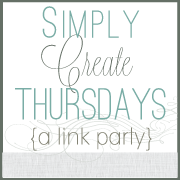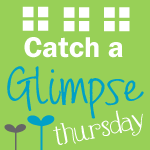This month I am the Queen Bee for the Hive #3 of the Stash Bee. I'm going to call my 15" block Focal Star, as it has wonderful potential for highlighting favorite prints such as this "Tree of Life" print from Tula Pink's Birds and Bees collection.
Color Scheme
My color palette includes turquoise/teal, coral, orchid, and chartreuse. Some of the collections that feature the colors I speak of include Mormor by Lotta Jansdotter, Wee Wander by Sarah Jane, Pearl Bracelets by Lizzy House, Acacia and FoxField by Tula Pink, Waterfront Park by Violet Craft, Mirabelle by Joanna Figueroa, True Colors by Joel Dewberry, and Road 15 by Sweetwater. These specific fabrics are not required, but I figure it's easier to get an accurate idea of a color if you can compare it to something you can see in person.
I have Kona equivalents too, thanks to the Palette Builder on Play Crafts. If you haven't played with this, oh boy, I think I can fairly say you're going to want to.
It became very evident that I have an affection for these colors during my stash pull.



Piecing
Enough cutting already. Let's break out the sewing machine and get to the piecing.
Sew one 8 1/2" side of the 8 1/2" x 3 1/2" Fabric B and Fabric D rectangles together with a 1/4" seam.
Ok, I lied. There's actually a little more cutting involved. Using the center seam as a guide, square up one 6 1/2" end. Now, flip the whole thing over so the fabric that was on top is now on bottom and the nice, straight edge is on the left (unless you're a lefty). Slide the ruler over to the 8" mark and slice. You should have chopped off a 1/2" or smaller sliver that you can dispose of or throw to the children playing on the floor (maybe that's just me). Without getting carried away and moving the fabric around, slide the ruler over to the 6" mark, whack, slide to the 4" mark, chop, slide to the 2" mark, snip, and NOW STOP! Tah-dah! You should now have four 2" x 6 1/2" rectangles.
It's Flying Geese-making time. Grab your 7 1/4" square of Fabric D and place the 3 7/8" squares of Fabric B as shown. Grab the 4 1/4" square of Fabric A and the 2 3/8" squares of Fabric B and do likewise. There should be an overlap in the middle. Your drawn line should go from corner to corner. Two sides of the smaller squares should match up with the corners of the larger squares.
Then cut.
Viola! (Are you impressed with how many appropriate explicatives I can muster?) Now you have Flying Geese. Chop off those dog ears (the tiny triangles that poke out and make the geese un-rectangularish).
Lay a 3 1/2" square of Fabric C on each 5" x 3 1/2" rectangle of Fabric D. These are going to make stitch and flip triangles in the corners. Be mindful of directional fabrics. This time stitch on the line! Sorry, I know we were on a roll with the 1/4" away thing.
Chop-chop.
That's the way! Next, attach the flying geese with 2" squares to the large flying geese. Stitch the two 3 1/2" x 15 1/2" rectangular units to the 2" x 15 1/2" rectangles.
Attach the top and bottom portions, and you're done. Yeah for your beautiful block!
If you make a Focal Star, would you please add it to my Flickr group?
Check out Alison of Little Bunny Quilt's blocks, as she is a member of Hive #3 of the Stash Bee. Besides, she has a great blog too!
I'm linking up with:




Design
I even have a plan in mind for the blocks I receive.
Color Scheme
My color palette includes turquoise/teal, coral, orchid, and chartreuse. Some of the collections that feature the colors I speak of include Mormor by Lotta Jansdotter, Wee Wander by Sarah Jane, Pearl Bracelets by Lizzy House, Acacia and FoxField by Tula Pink, Waterfront Park by Violet Craft, Mirabelle by Joanna Figueroa, True Colors by Joel Dewberry, and Road 15 by Sweetwater. These specific fabrics are not required, but I figure it's easier to get an accurate idea of a color if you can compare it to something you can see in person.
I have Kona equivalents too, thanks to the Palette Builder on Play Crafts. If you haven't played with this, oh boy, I think I can fairly say you're going to want to.
It became very evident that I have an affection for these colors during my stash pull.



As for the background, I'm going with low volume fabrics. I adore the way these make such an interesting option for a scrappy background. My love for these fabrics has resulted in an entire Pinterest board.
Cutting
Now, on to the cutting. You are going to need at least four different fabrics.
Fabric A should be primarily turquoise/teal, coral, orchid, or chartreuse. Pick one. If you want to use a focal fabric, now's the time. Fabric B will surround Fabric A. Pick primarily turquoise/teal, coral, orchid, or chartreuse, so long as it's not the color you used for Fabric A (unless it is a very different value). Fabric C should be turquoise/teal, coral, orchid, or chartreuse. It doesn't matter if you have used the fabric or color for A or B, as it's going to be part of the quilt's secondary design. Fabric D is a low-volume print that has a much lighter value than A, B & C. It should read as a solid white or cream. This can be scrappy.
Fabric A (turquoise/teal, coral, orchid, or chartreuse--bonus points for a focal print):
Cut a 6 1/2" square. This will be the center of the block. I fussy cut my to look most beauteous.
Cut a 4 1/4" square. Don't get attached to how intact this square looks.
Fabric B (turquoise/teal, coral, orchid, or chartreuse):
Cut one 3 1/2" x 8 1/2" rectangle. If you have a directional fabric, make the height 8 1/2" and the width 3 1/2".
Cut four squares of each: 3 7/8", 2 3/8" and 2".
Fabric C (turquoise/teal, coral, orchid, or chartreuse):
Cut four 3 1/2" squares. These can be from the same fabric or different fabrics (scrappy).
Fabric D (low volume with a white or cream background, can be an assortment of fabrics or all the same print):
Cut a 7 1/4" square, an 8 1/2" x 3 1/2" rectangle (If you have a directional fabric, make the height 8 1/2" and the width 3 1/2".), and four 5" x 3 1/2" rectangles (If you have a directional fabric, make the height 3 1/2" and the width 5".).
Piecing
Enough cutting already. Let's break out the sewing machine and get to the piecing.
Sew one 8 1/2" side of the 8 1/2" x 3 1/2" Fabric B and Fabric D rectangles together with a 1/4" seam.
Yep, just like this.
Now press toward Fabric B (the darker one).
Ok, I lied. There's actually a little more cutting involved. Using the center seam as a guide, square up one 6 1/2" end. Now, flip the whole thing over so the fabric that was on top is now on bottom and the nice, straight edge is on the left (unless you're a lefty). Slide the ruler over to the 8" mark and slice. You should have chopped off a 1/2" or smaller sliver that you can dispose of or throw to the children playing on the floor (maybe that's just me). Without getting carried away and moving the fabric around, slide the ruler over to the 6" mark, whack, slide to the 4" mark, chop, slide to the 2" mark, snip, and NOW STOP! Tah-dah! You should now have four 2" x 6 1/2" rectangles.
Get out your Frixion pen or handy, dandy pencil and draw a diagonal line from one corner to the other on your 2 3/8" and 3 7/8" squares of Fabric B and the 3 1/2" squares of Fabric C.
or handy, dandy pencil and draw a diagonal line from one corner to the other on your 2 3/8" and 3 7/8" squares of Fabric B and the 3 1/2" squares of Fabric C.
It's Flying Geese-making time. Grab your 7 1/4" square of Fabric D and place the 3 7/8" squares of Fabric B as shown. Grab the 4 1/4" square of Fabric A and the 2 3/8" squares of Fabric B and do likewise. There should be an overlap in the middle. Your drawn line should go from corner to corner. Two sides of the smaller squares should match up with the corners of the larger squares.
To the sewing machine! Sew 1/4" on either side of the drawn lines. Press the triangles without cutting.
Thanks for being patient. Now you may chop from corner to corner.
Place the remaining 2 3/8" and 3 7/8" squares as shown. Stitch 1/4" on either side of the line you drew. Press.
Then cut.
Viola! (Are you impressed with how many appropriate explicatives I can muster?) Now you have Flying Geese. Chop off those dog ears (the tiny triangles that poke out and make the geese un-rectangularish).
Ahhh! That's better.
Lay a 3 1/2" square of Fabric C on each 5" x 3 1/2" rectangle of Fabric D. These are going to make stitch and flip triangles in the corners. Be mindful of directional fabrics. This time stitch on the line! Sorry, I know we were on a roll with the 1/4" away thing.
Press matching one corner of the triangle with the corner of the rectangle.
Fold back over and cut a 1/4" seam. Oh how I love my Add-A-Quarter Ruler .
.
Chop-chop.
It's time to lay out the pieces. Start by adding a 2" square to either side of two of the smaller Flying Geese. Add a 5" x 3 1/2" rectangle with a triangle in the corner to either side of two of the larger flying geese. Stitch a 2" x 6 1/2" rectangle to either side of the remaining two smaller flying geese.
That's the way! Next, attach the flying geese with 2" squares to the large flying geese. Stitch the two 3 1/2" x 15 1/2" rectangular units to the 2" x 15 1/2" rectangles.
Now we have something that looks like this. Sew the flying geese units to the right and left sides of the 6 1/2" center square.
If you make a Focal Star, would you please add it to my Flickr group?
Check out Alison of Little Bunny Quilt's blocks, as she is a member of Hive #3 of the Stash Bee. Besides, she has a great blog too!
I'm linking up with:

















































